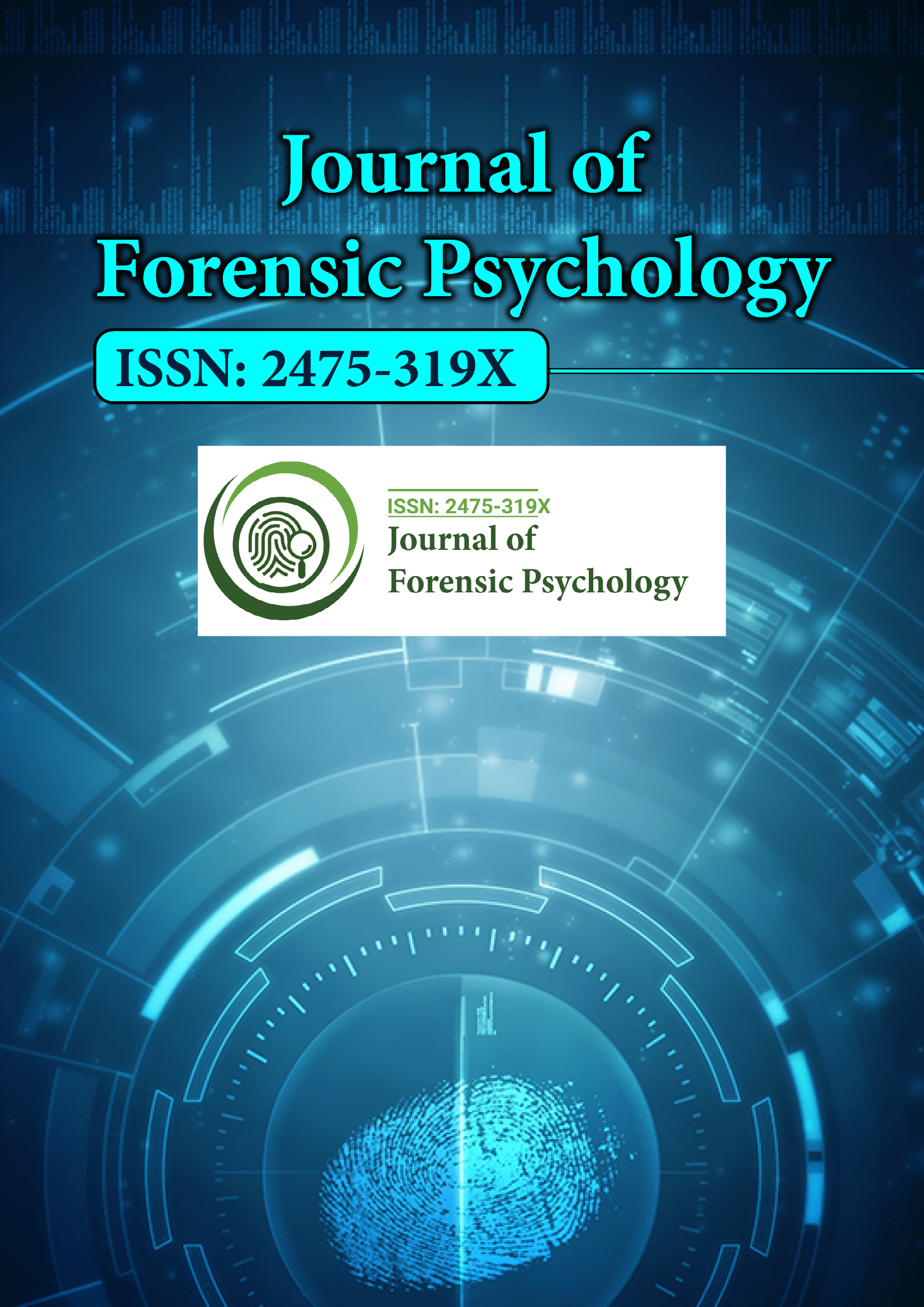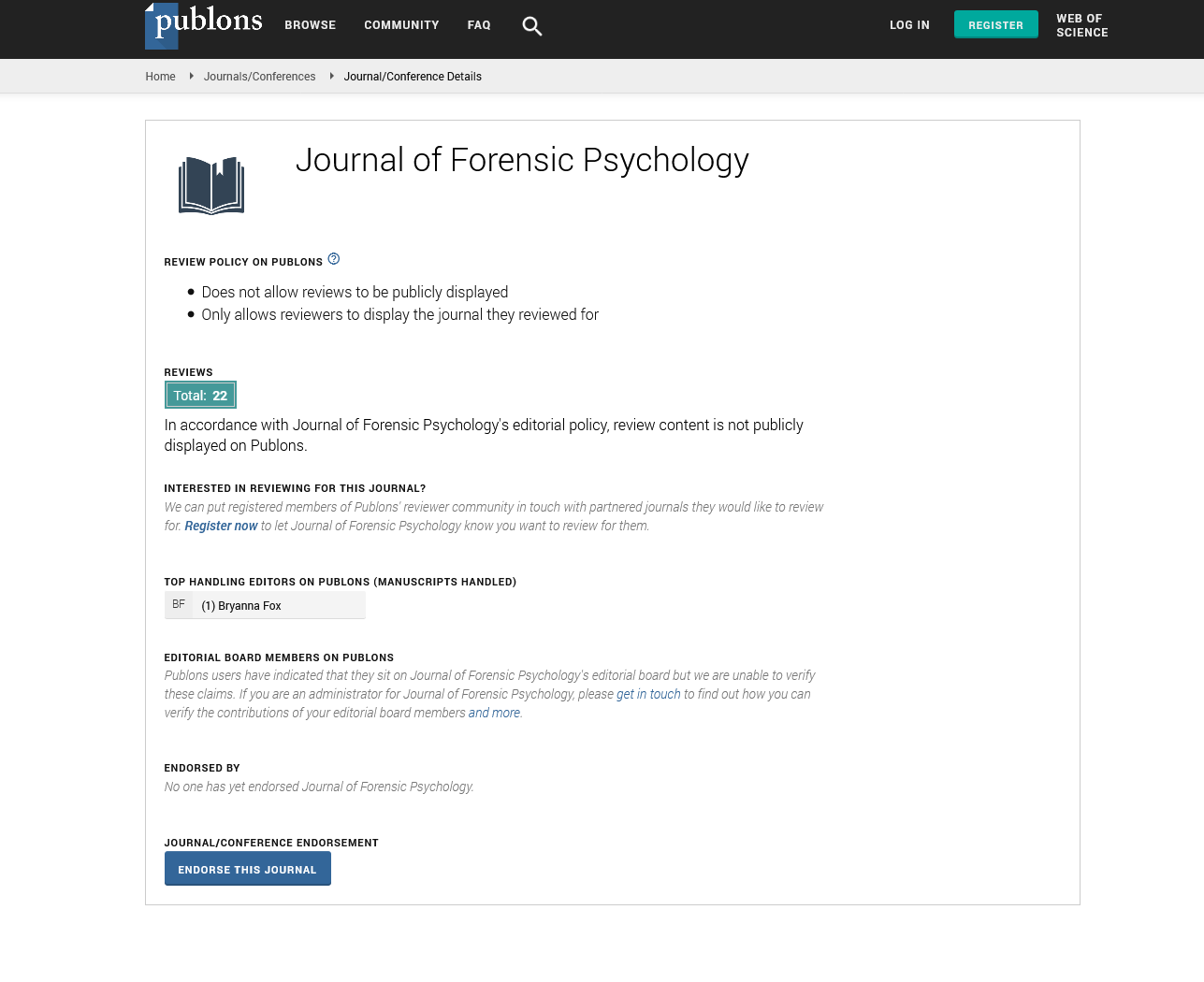Indexed In
- RefSeek
- Hamdard University
- EBSCO A-Z
- Publons
- Geneva Foundation for Medical Education and Research
- Euro Pub
- Google Scholar
Useful Links
Share This Page
Journal Flyer

Open Access Journals
- Agri and Aquaculture
- Biochemistry
- Bioinformatics & Systems Biology
- Business & Management
- Chemistry
- Clinical Sciences
- Engineering
- Food & Nutrition
- General Science
- Genetics & Molecular Biology
- Immunology & Microbiology
- Medical Sciences
- Neuroscience & Psychology
- Nursing & Health Care
- Pharmaceutical Sciences
Commentary - (2022) Volume 7, Issue 2
A Short Note on Forensic and Imaging
Ruby Mancho*Received: 28-Jan-2022, Manuscript No. JFPY-22-15743; Editor assigned: 31-Jan-2022, Pre QC No. JFPY-22-15743(PQ); Reviewed: 14-Feb-2022, QC No. JFPY-22-15743; Revised: 18-Feb-2022, Manuscript No. JFPY-22-15743(R); Published: 25-Feb-2022, DOI: 10.35248/2475-319X.22.7.209
Description
Nowadays, medical imaging techniques are not just only used for analysis and diagnosis of diseases but can also be used as sign in court. Medical imaging in forensics is a very dedicated field in which radiological methods are used to aid pathologists to identify the reason of death or to recognize the remains. Recently, due to incredible free images and videos, altering programs on the internet have made altering images and recordings very simple. Approving the reliability of images or recordings and classifying any endeavour of fabrication without use of dynamic legal process is a very inspiring task nowadays. Therefore security and forensics in medical imaging are coming into sight, which is a major challenge to the scientists. With the development in the field of advanced imaging, a few safety and protection issues have been highlighted. Therefore this chapter discusses the cogency of the advanced imaging, clarifies the presence cycle of the digital images and furthermore different actions that can be performed on it. Right off the bat, we present types of imaging modalities, tools for proving image authenticity, and the application of digital imaging techniques to several forensic sub-disciplines is discussed. At last, we recognize and examine a few essential open research difficulties as future research challenges.
A forensic image (forensic copy) is a bit-by-bit, sector-by-sector direct copy of a physical storage device, folders and unallocated, including all files, free and slack space. Forensic images include not only all the files noticeable to the operating system but also removed files and pieces of files left in the slack and free space. Forensic imaging is one part of computer forensics, which is one of the applications of computer analysis and investigation techniques to collect proofs suitable for presentation in a court of law.
Not all imaging and backup software generate forensic images. Windows backup, for example, creates image backups that are not complete copies of the physical device. Forensic images can be shaped through specific forensic software. Some disk imaging values not advertised for forensic use also make complete disk images. In the case of cybercrime, extra evidence may be exposed other than what is available through an operating system in the form of incriminating data that has been deleted to stop discovery. Unless the data is deleted steadily and overwritten, it can often be improved with forensic or file recovery software.
Making and backing up a forensic image aids prevent loss of data due to original drive failures. The damage of data as evidence can be harmful to legal cases. Forensic imaging can also prevent the loss of serious files in general.
The trustworthiness of photographs has an important role in many areas, including: forensic investigation, surveillance systems, criminal investigation, medical imaging, intelligence services, and journalism. The art of creating image fakery has a long history. But, in today’s digital age, it is conceivable to very easily change the information signified by an image without leaving any obvious traces of tampering. Despite this, no system yet exists which achieves accurately and effectively the image tampering detection task.
The digital information revolution and issues concerned with multimedia safety have also created many approaches to digital forensics and tampering detection. Generally, these approaches could be divided into active and passive–blind methods. The area of active methods simply can be divided into the data hiding approach and the digital signature approach. Mainly researchers focus on blind methods, as they are observed as a new way and in contrast to active methods, they work in absence of any defensive techniques and without using any prior information about the image. To perceive the traces of tampering, blind methods use the image function and the fact that forgeries can bring into the image specific detectable changes.
Conclusion
In the absence of digital signatures or watermarks, the blind approach is the only way how to make the decision about the trustworthiness of the examined image. Image forensics is a growing research field and promises an important improvement in forgery detection in the never ending competition between image forgery detectors and image forgery creators.
Citation: Mancho R (2022) A Short Note on Forensic and Imaging. J Foren Psy. 7:209.
Copyright: © 2022 Mancho R. This is an open-access article distributed under the terms of the Creative Commons Attribution License, which permits unrestricted use, distribution, and reproduction in any medium, provided the original author and source are credited.
Sources of funding : © 2022 Mancho R. This is an open-access article distributed under the terms of the Creative Commons Attribution License, which permits unrestricted use, distribution, and reproduction in any medium, provided the original author and source are credited.

